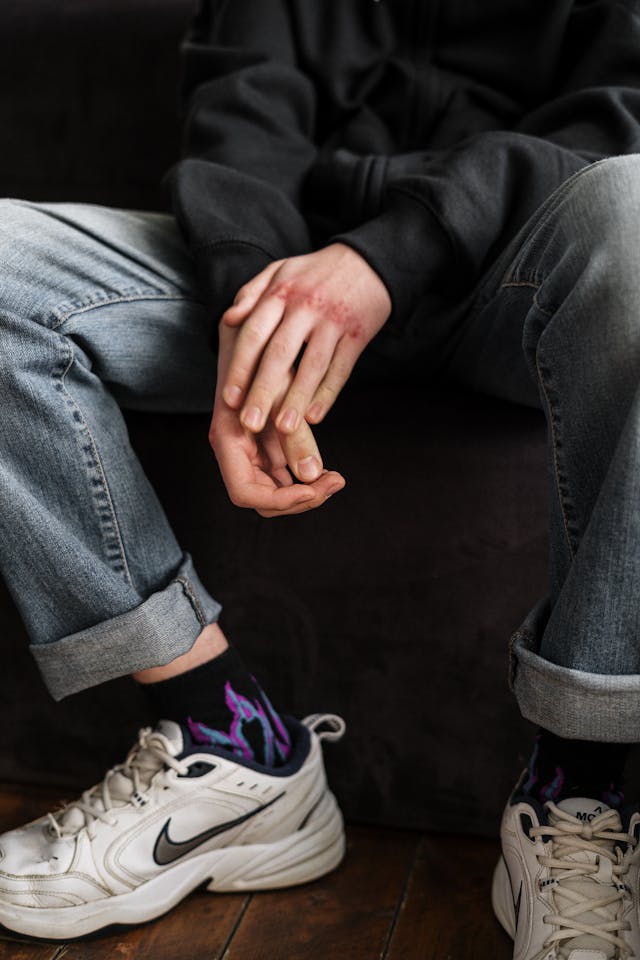What is a PTSD fracture, and how does it differ from the condition itself? Join us as we talk about the trauma that comes with service and mental illness. We typically associate physical harm with a fracture. However, the term “PTSD fracture” is a metaphor. It’s about the trauma we experience during a shocking incident. This guide will help you understand the complexities and uncover real-life stories.
Table of Contents
Understanding PTSD?

PTSD is a psychological condition that occurs after experiencing a traumatic event. Some people are more familiar with the term ‘eczema, but there has been increased awareness and studies surrounding the condition over the past few decades. These latter phenomena were known as soldier’s heart in the American Civil War, shell shock in World War I, and war neurosis in World War II.
PTSD is simply a response that you have after a traumatic event. Some people continue experiencing symptoms for years, while others show improvement within a few months. The Addiction may persist for many years. Another kind of symptom relationship is that symptoms can vary in how they change from low to high intensity. Some individuals may only have severe symptoms later in life as they go through major life events. One of the unusual features of post-traumatic stress disorder is that symptoms might take months and even years to develop.
Symptoms of PTSD Fractures

- Intrusive Memories: While there are some therapies that can help with unconscious memories, it is extremely challenging to erase conscious memories. has demonstrated success in clearing information from the survivor’s implicit memory, there is a big challenge in wiping out the conscious memories of the actual traumatic event- which is usually manifested through recurrent thinking about the event, nightmares, and flashbacks.
- Avoidance: This is often demonstrated by the survivor staying away from places, objects, and even individuals who take them down memory lane of the disaster they underwent.
- Negative Changes in Thinking and Mood: These are hopelessness, memory loss, inability to form close relationships and sexual intimacy, and social isolation from society and beloved ones.
- Changes in Physical and Emotional Reactions: Sensitiveness to sound or noise, irritability or feeling as if one is constantly under pressure, showing temper quickly, and having problems sleeping.
The Profound Effects on Mental and Physical Health
Therefore, this study’s findings show that PTSD fractures do not only affect the mental health of veterans but also negatively affect the physical health of individuals. Individuals with PTSD often suffer from:
- Chronic Pain and Health Issues: This paper establishes that PTSD co-occurs with many chronic pain conditions and is also associated with the worsening of pain symptoms. This chronic state of hyperarousal can cause chronic pain in the various structures, like the head, leading to common headaches, stomach problems, and problems with the heart, among others.
- Substance Abuse: Other people seek solace in drugs and alcohol in an attempt to help ease or mask their pain; this leads to substance dependence and vice.
Impaired Functioning: Problem: This includes trying to find or hold a job and managing daily activities and relationships due to the symptoms.
Real-Life Stories of PTSD Fractures

Case Study 1: John’s Battle with PTSD After Combat
Several months after John returned home, he had emotional wounds. The experiences that war gave him did not let him sleep and came almost every night as nightmares, and when he was awake, he saw fighting in his mind. It would become tough for him to fit in the society, and he began feeling he was a stranger to everyone, including his family. He stated that due to his PTSD fracture, he could not obtain a steady source of income for a job and resorted to alcoholism to self-medicate. The chronic and systemic ways in which PTSD intertwines with John’s life highlight how this disorder has a highly significant impact on the overall lifestyle and well-being of veterans.
Case Study 2: Sarah’s Journey After a Car Accident
Sarah witnessed a terrible accident where her closest friend lost her life. Even though she was not physically injured, the internal damage was immense. It got to the point where she refused to drive or even be in a car. Once, she was a cheerful lady, but she became so anxious and depressed all the time. Such is the case of Sarah, where the PTSD crack impaired her relationships, leaving her feeling disconnected and overwhelmed, proving how trauma can infiltrate and change all facets of life.
The Path to Healing
PTSD fractures require extensive diagnosis and treatment, as well as the definition of effective personalized care plans. Effective strategies include:
- Therapy: CBT and exposure therapy are useful, and the identified intervention technique also applies to EMDR treatment.
- Medication: While a cure for panic attacks and panic disorders is not so obtainable, the instances can be managed with the help of antidepressants and anti-anxiety medications.
- Support Systems: It is so important to seek support from friends, family, and organizations..
- Lifestyle Changes: Integrating exercise, breathing, and a balanced diet into daily life can improve one’s quality of life.
Conclusion

PTSD fractures are created by unspeakable experiences, forcing people to exist in a broken identity. It is important to understand and respond to PTSD fractures. This way, we can help survivors rebuild their lives. All they need is compassion, medical treatment, and a supportive community.





